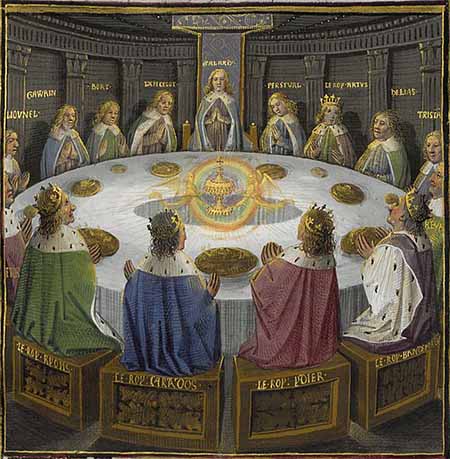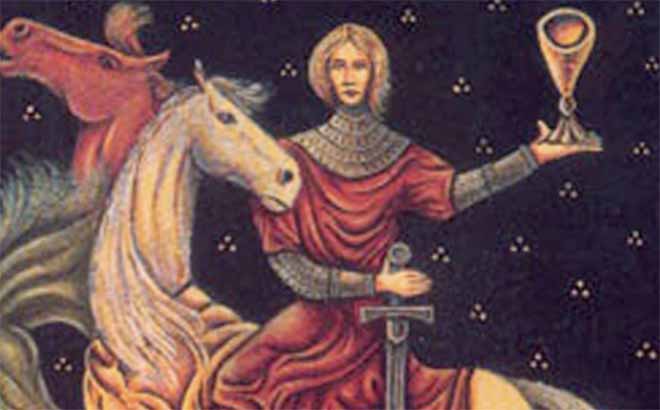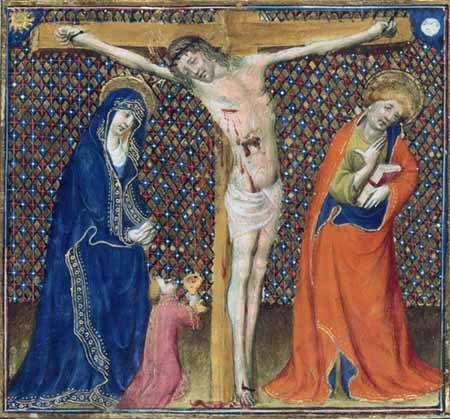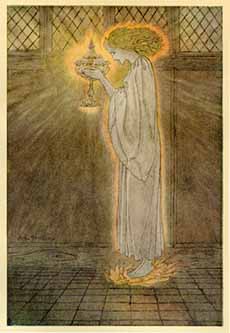The Quest For The Holy Grail
A Neverending Story

The Holy Grail is a mythical and symbolic object that is often associated with the cup used by Jesus during his last meal (the Last Supper) with his apostles the day before his crucifixion. According to legend, it was also in this cup that Joseph of Arimathea collected Christ's blood dripping from a wound inflicted to his ribs by the Lance of Longinus (Holy Lance). From this stems the first interpretation of the word Grail which would mean sang real (san-graal) or royal blood. According to the second interpretation, derived from ancient Latin gradalis, Grail would be synonymous with cup.
Of a mysterious nature, the Holy Grail takes different forms according to stories; it could be a precious stone with extraordinary magical powers, a cauldron, a glass plate made of emerald, the ark of alliance, the Shroud of Turin, a book having belonged to Christ and even a gem adorning the crown of Satan. A theory emitted in 1982 by three British journalists in a book entitled The Holy Blood and the Holy Grail suggests that the Holy Grail is not an object but rather the offsprings of the union between Jesus Christ and Mary Magdalene, the Merovingians.

The quest for the Holy Grail is a fascinating subject that has inspired many films and legends and was born in medieval times from the fusion of Celtic and Christian culture. Thus the myth is present in various tales and fables like that of King Arthur and his twelve knights of the Round Table but also in American cinema as in Indiana Jones and the Last Crusade and The Da Vinci Code.
Chrétien de Troyes

The first official mention of the Holy Grail is made in a romance novel (chivalric romance) of French poet Chrétien de Troyes entitled Perceval, the Story of the Grail. In this literary Arthurian epic, the knight Perceval attends a parade at The Fisher King's castle where he sees, among other things, a gold cup that emits a bright light. The chronicle tells that The Fisher King manages to survive serious wounds thanks to a host placed in the famous cup, the Grail. In a German revival written in the twelfth century, Parzival, the Holy Grail rather appears as a stone endowed with romantic powers and as a source of benevolence on Earth.
the Grail story

The best known version of the legend of the Holy Grail comes from a book called the Grail story, a three volumes saga (Joseph of Arimathea, Merlin and Perceval) written by Robert de Boron at around the same time as Troyes's Perceval. In this version, Joseph of Arimathea, disciple of Jesus charged with his burial, notices during the preparation of the body droplets of blood dripping from a wound and decides to collect them in the vase used by the Christ at the Last Supper. Joseph of Arimathea then took the Holy Grail to Great Britain where he built the first Catholic church.
Contradictory stories
From the moment Joseph of Arimathea leaves Palestine, the trace of the Grail is lost in a series of divergent narratives. Some argue that after spending several centuries in England and Rome, the Holy Grail was taken to the valley of Val Codera in Italy, where it would still be today.

Another story is that Merlin donated the Grail to Christ then on a trip to Cornwall. After the death of Jesus, Joseph of Arimathea would leave for England with the cup which would end up in the hands of The Fisher King. Badly wounded by the Lance of Longinus, a terrible curse would have devasted Great Britain, which would only recover after Merlin and Arthur implored the Grace of God and the trace of the vase would have been lost. Parsifal, worthy Knight of the Round Table, then undertook a long quest to recover the Holy Grail.

In the footsteps of the Holy Grail
It is difficult to trace the history of the Grail since its form itself is open to debate. Theories are numerous: the Holy Grail would be buried along with the famous treasure of the Knights Templar, it would be a plate held in a cathedral of Genoa or according to the words of an old pilgrim of the first millennium the Grail would rest in a chapel on Holy Land. Other hypotheses mention a church in Turin and the cathedral of Bari in Italy. The Holy Chalice of Valencia Cathedral is also reported as a possible candidate of the Holy Grail. The vase would've been passed from pope to pope since Saint Peter until today. A conjecture connects the Cup of Christ with the construction of Castel del Monte, a Bari castle built by Holy Emperor Frederick II but never inhabited and whose vocation was possibly to house the Holy Grail.
From Europe to America, the Grail could be found in France, Rennes-le-Château, Scotland, Glastonbury, Great Britain and even Oak Island where it would have been thrown into a well.









































































































































































































































































































































